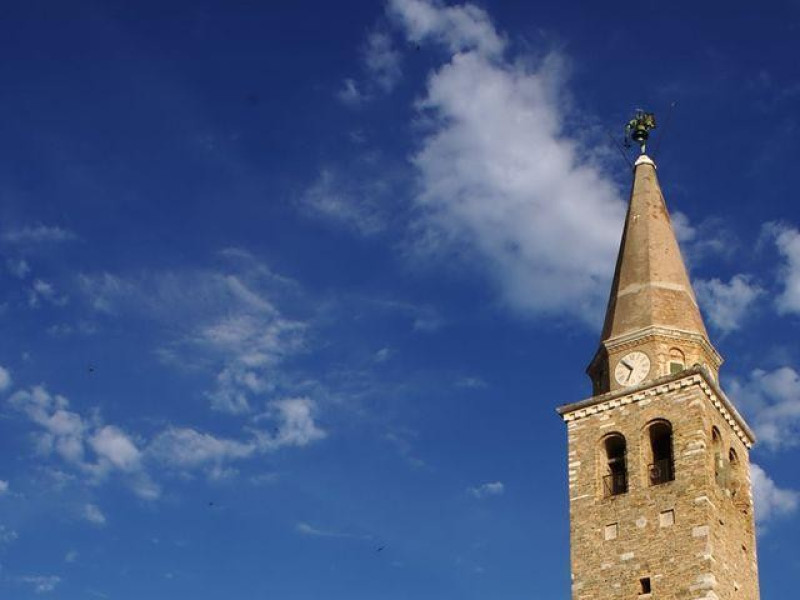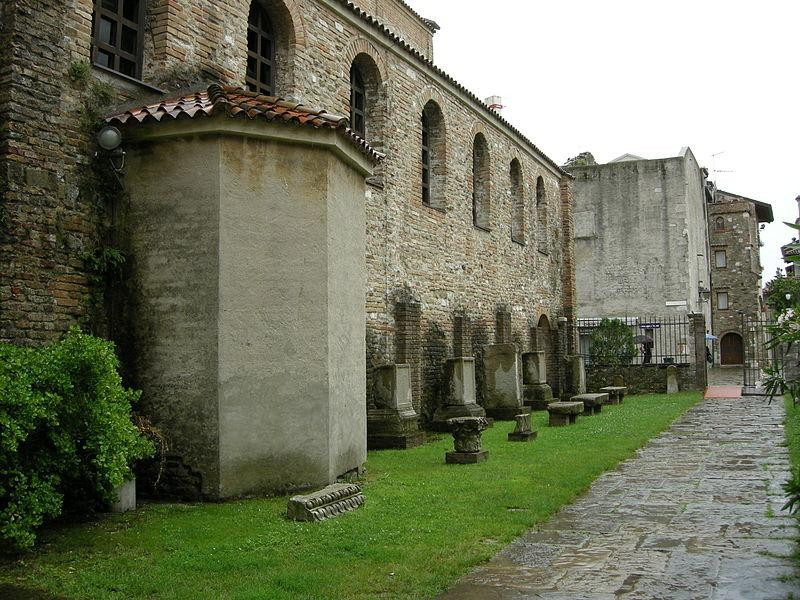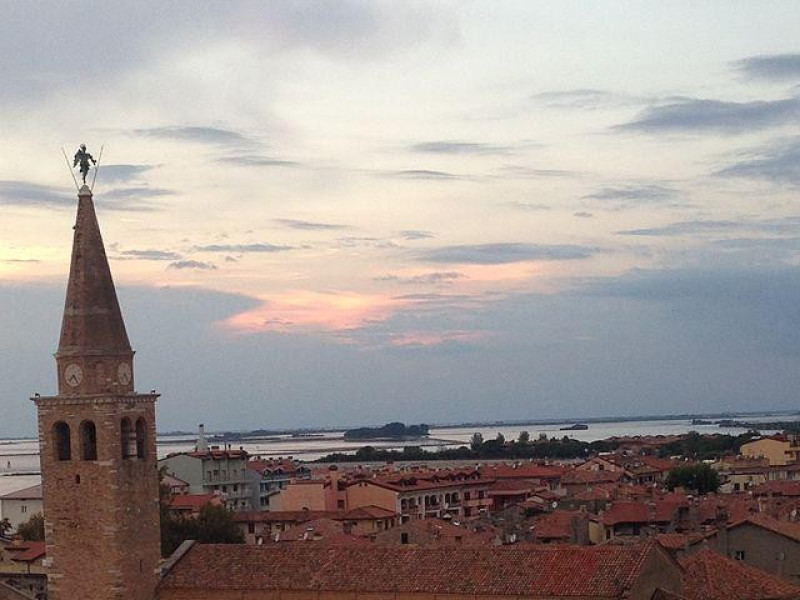Basilica di Sant'Eufemia
The St. Euphemia's Basilica dating from the sixth century and is located on the square of the ancient patriarchal city, the site of an earlier fifth century basilica, flanked by the Baptistery and the fifteenth century spire bell tower. The building, a basilica plant, was commissioned by Elia, Archbishop of Aquileia, fleeing from Lombards invasion. Between the sixth and seventh centuries, the Basilica was the seat of the branch wire-Roman and wire-Byzantine where it split the patriarchate until the final separation between the two Churches. Subject to increasingly strict control of the Dukes of Venice, the Basilica was built in the new diocese. In 1455 the current bell tower was erected, topped by a statue embossed copper weathervane in 1462, depicting St. Michele Arcangelo. The exterior, in early Christian style, is in brick and sandstone, with alterations dating from the XVII and XIX, in part removed from the restoration of the mid twentieth century. The facade is divided in main and pilasters, open three large windows. The interior is divided into three naves, separated by columns in polychrome marble from the Roman era. Notable is the decorative mosaic floor, dating from the late sixth century. In the presbytery, decorated on top by frescoes, the shovel is placed in embossed and engraved silver (1372). The octagonal Baptistery, preceded by a square with ancient Roman sarcophagi found in Grado, was bring it back to its original state, with the discovery of the ancient mosaic floor and a small altar.



